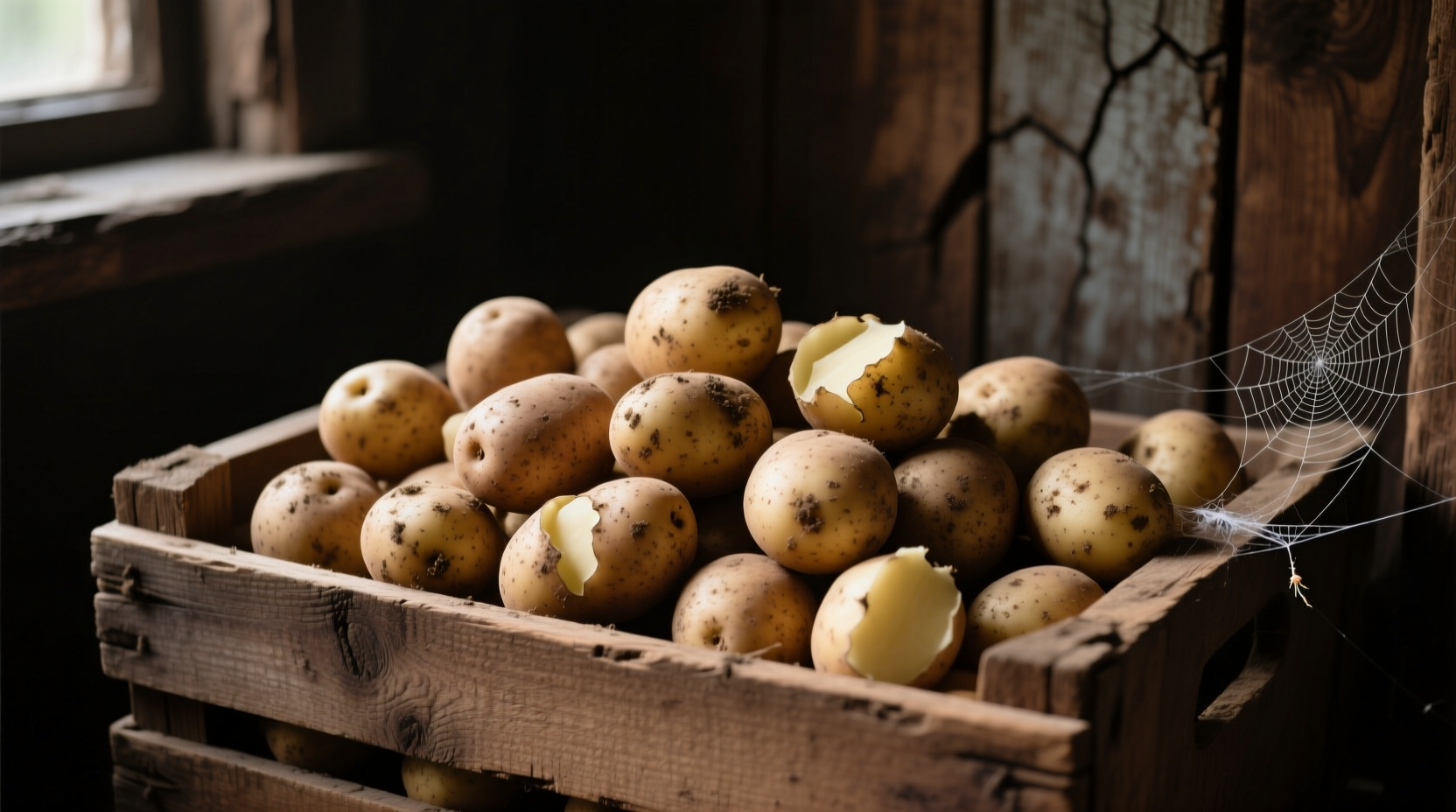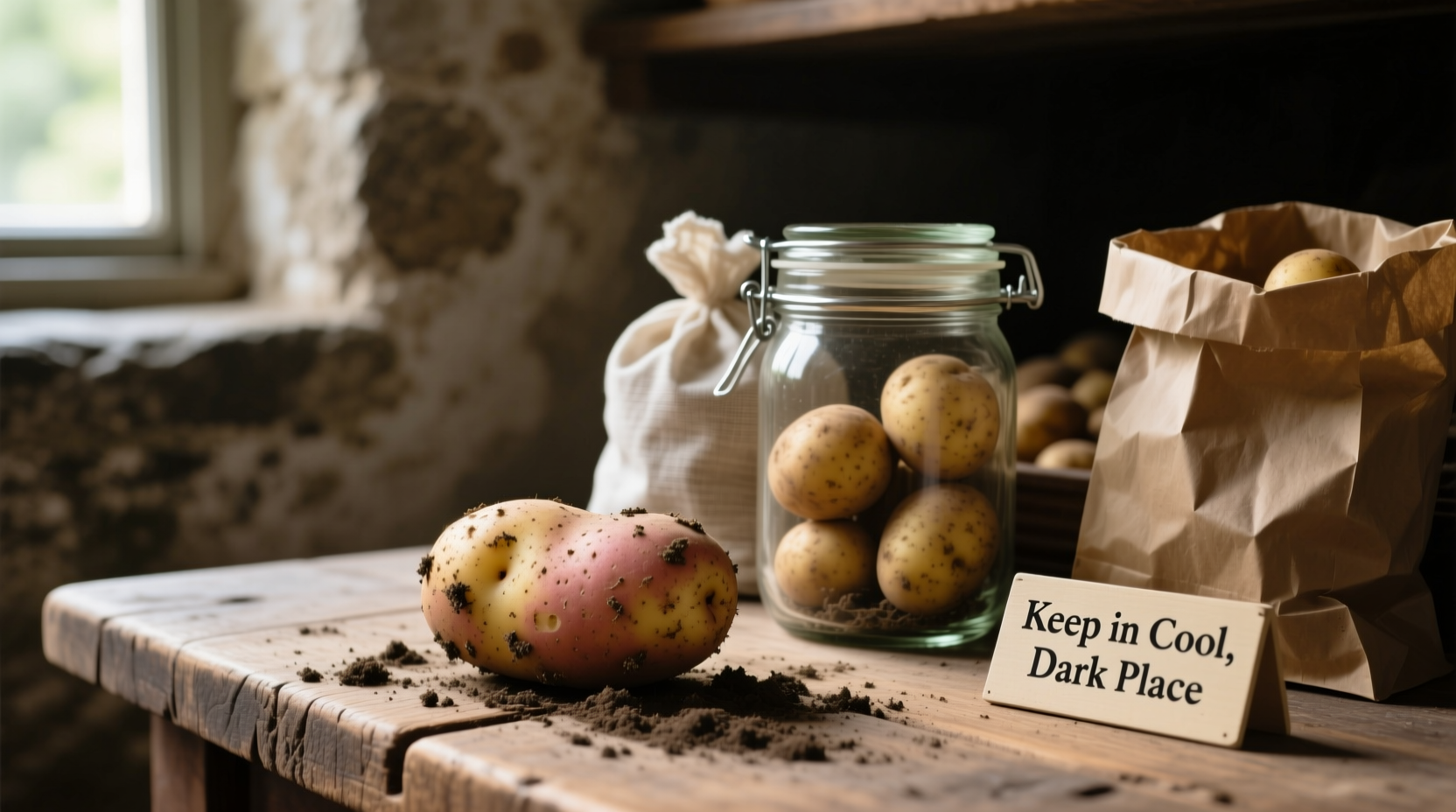Discover how to extend your potato harvest or grocery store purchase with professional preservation techniques that maintain flavor and texture. Whether you're dealing with a surplus from your garden or want to reduce food waste, these science-backed methods ensure your spuds stay fresh and usable for months.
Understanding Potato Preservation Fundamentals
Potatoes spoil due to moisture loss, sprouting, and enzymatic browning. The National Center for Home Food Preservation explains that proper preservation interrupts these natural processes. Different potato varieties respond uniquely to preservation methods—russets excel for baking and freezing, while red potatoes maintain texture better when canned.
According to USDA Food Safety and Inspection Service guidelines, maintaining proper temperature and humidity is critical. Raw potatoes should never be stored below 45°F (7°C) as cold temperatures convert starch to sugar, creating off-flavors when cooked. This scientific insight explains why refrigeration harms raw potatoes but works for cooked ones.
Optimal Storage Conditions for Raw Potatoes
Proper storage is the simplest preservation method for raw potatoes. Create ideal conditions by following these professional techniques:
- Store in complete darkness to prevent greening (which produces toxic solanine)
- Maintain 45-50°F (7-10°C) temperature—never below 40°F (4°C)
- Keep humidity at 90-95% using perforated plastic bags or paper sacks
- Never store near onions, which release gases that accelerate sprouting
- Check weekly and remove any soft or sprouting potatoes immediately
University of California Cooperative Extension research shows properly stored russet potatoes maintain quality for 2-3 months, while fingerlings last 1-2 months. This timeline varies significantly based on initial quality and storage consistency.
| Preservation Method | Required Equipment | Shelf Life | Best For |
|---|---|---|---|
| Cool Storage | Dark container, thermometer | 2-3 months | All cooking methods |
| Refrigeration | Airtight containers | 3-5 days | Cooked potatoes |
| Freezing | Blancher, freezer bags | 10-12 months | Mashed, roasted, fries |
| Dehydrating | Dehydrator, airtight jars | 6-12 months | Hash browns, soups |
| Pressure Canning | Pressure canner, jars | 12-18 months | Stews, casseroles |
Freezing Potatoes for Long-Term Storage
Freezing preserves potatoes for up to a year when done correctly. Professional chefs use this method for meal prep efficiency. Follow these steps for best results:
- Peel and cut potatoes into desired shapes (cubes, slices, or shreds)
- Blanch in boiling water: 3-5 minutes for cubes, 2-3 minutes for slices
- Immediately plunge into ice water to stop cooking
- Dry thoroughly on clean towels—moisture causes freezer burn
- Arrange in single layer on baking sheet and freeze (prevents clumping)
- Transfer to labeled freezer bags with air removed
The FDA Food Code emphasizes that proper blanching destroys enzymes causing texture degradation. Skip this step and your frozen potatoes will become mushy when thawed. For mashed potatoes, add 1-2 tablespoons of cream or butter per pound before freezing to maintain texture.

Dehydrating Potatoes for Space-Efficient Preservation
Dehydrating reduces potatoes to 20% of their original size while preserving nutrients. This method works particularly well for making instant hash browns or soup ingredients:
- Pre-cook potatoes by boiling until partially done (5-7 minutes)
- Slice uniformly to 1/8-inch thickness using a mandoline
- Treat with ascorbic acid solution to prevent browning
- Dehydrate at 125°F (52°C) for 8-10 hours until brittle
- Condition in jars for 7-10 days before long-term storage
According to research from the National Center for Home Food Preservation, dehydrated potatoes maintain optimal quality for 6-12 months when stored in oxygen-free containers with moisture absorbers. Reconstitute by soaking in cold water for 30 minutes before cooking.
Safe Pressure Canning for Shelf-Stable Potatoes
Canning requires strict adherence to safety protocols since potatoes are low-acid foods. The USDA Complete Guide to Home Canning specifies:
- Always use a pressure canner—water bath canning is unsafe for potatoes
- Process pint jars at 10 PSI for 35 minutes, quarts for 40 minutes
- Maintain proper headspace (1 inch for raw pack, 1.5 inches for hot pack)
- Use only fresh, blemish-free potatoes without sprouts
- Store in cool, dark place and use within 12-18 months
Improper canning creates risk for botulism, a potentially fatal foodborne illness. The FDA emphasizes that home canners must follow validated processing times and pressures without modification. Never attempt to can mashed or pureed potatoes, as their density prevents proper heat penetration.
Troubleshooting Common Preservation Problems
Even with proper techniques, issues can arise. Here's how to handle frequent preservation challenges:
- Sprouting potatoes: Remove sprouts immediately and use within 3-5 days. Store with an apple to inhibit further sprouting.
- Green spots: Cut away all green areas plus 1/4 inch around them—these contain toxic solanine.
- Mushy texture after thawing: Indicates improper blanching or excess moisture before freezing.
- Cloudy canning liquid: Usually harmless starch but indicates overfilling jars—still safe if seals are good.
When in doubt about safety, follow the food safety principle: "When uncertain, throw it out." The USDA Food Safety and Inspection Service reports that potato-related food waste costs American households approximately $1.2 billion annually—proper preservation techniques can significantly reduce this waste while ensuring food safety.











 浙公网安备
33010002000092号
浙公网安备
33010002000092号 浙B2-20120091-4
浙B2-20120091-4